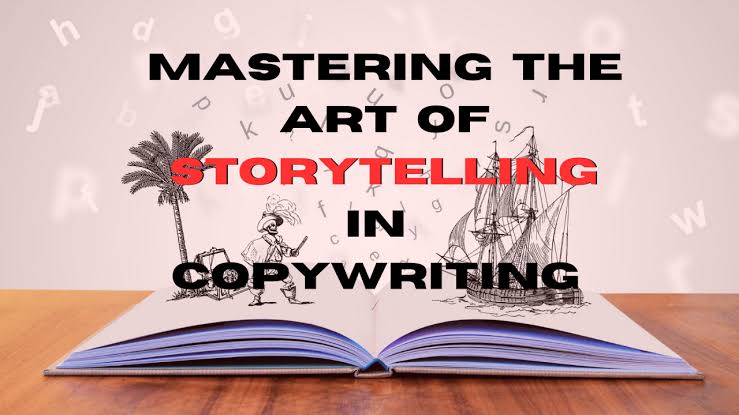Podcasts have transformed how we consume content offering a platform, for storytelling and sharing information through audio. Yet creating captivating podcast material goes beyond having a microphone and recording software. Effective copywriting plays a role, in captivating listeners and providing an unforgettable experience. This article explores the art of podcast copywriting focusing on scripting and storytelling techniques that can elevate your audio content.
Understanding Copywritings Role in Podcasts
Podcast copywriting involves crafting the written material that will be presented through audio. This encompasses everything from the podcasts introduction and episode scripts to promotional content and show notes. Unlike content podcast copy needs to be tailored for delivery requiring clarity and engagement.
Creating the Podcast Intro: The intro of a podcast episode plays a role in setting the mood for the content. Its important to capture the listeners attention right away and give them a sense of what the episode will be about. A compelling intro usually includes a summary of the episode a teaser to spark curiosity and an introduction of the host or guests. The tone should be friendly and inviting to establish a connection with the audience from the beginning.
Crafting Engaging Episode Scripts: The script for each podcast episode serves as the framework, for the content. It should be well organized and structured to ensure a flow of information. Begin by outlining the key points or sections of the episode. Each section should have a purpose and contribute to the episodes overall theme. Use a tone that reflects speech patterns steering clear of sentences or technical language that might alienate listeners.
Using Storytelling Techniques: Storytelling is a tool in writing for podcasts. It helps craft a story that captures the listeners imagination and keeps them interested. Good storytelling involves building a narrative structure with a clear beginning, middle and end. Incorporate stories, personal experiences or real life examples to illustrate points and make the content relatable. Ensure that the storytelling elements align with the podcasts theme and enhance the overall message.
Balancing Information and Fun: A podcast strikes a balance between offering valuable information and entertaining the audience. While educational content is important it should be presented in an engaging and approachable way. Avoid overwhelming episodes with information or delivering it in a monotone manner. Instead sprinkle in humor, anecdotes and varied delivery to make the content more enjoyable and memorable.
Crafting Smooth Transitions, Seamless transitions between topics or segments are crucial, for keeping your audiences interest. Utilize phrases or sentences to smoothly guide listeners from one point to another. This approach helps establish a narrative flow and prevents the episode from feeling disjointed. Well designed transitions also contribute to reinforcing the episodes theme and maintaining content. Writing Captivating CTAs (Calls to Action) is essential for prompting audience interaction and engagement. Whether you want your listeners to subscribe to the podcast, explore a website or follow social media platforms your CTAs should be clear and enticing. Strategically position CTAs throughout the episode ensuring they align with the content and are delivered in a natural conversational tone.
Optimizing Show Notes: Show notes offer a summary of each podcast episode and are a valuable resource for listeners. They should include points, details about guests, relevant links and timestamps for segments throughout the episode. Well crafted show notes enhance the listeners experience by providing context and making it easier to follow the content.
Adapting Content for Formats: Podcast content can be transformed into formats such as blog posts, social media updates and email newsletters. When adapting podcast material its important to customize the writing style for the format and audience. For instance social media posts should be brief and captivating while blog posts can offer a more comprehensive summary of the episode.
Challenges and Best Practices in Podcast Copywriting.
Preserving Authenticity, Authenticity plays a role, in podcasting. Listeners appreciate content that showcases the hosts unique personality and viewpoint. While creating scripts and narratives is important it's equally vital to maintain an authentic tone and style. Steer clear of overly polished or scripted material that might come across as insincere.
Ensuring Inclusivity. Accessibility is a consideration, in podcast writing. Ensure that the content is inclusive and welcoming to a range of audiences. This involves using language avoiding jargon and offering transcripts or summaries for those who prefer content.
Keeping Track of Listener Feedback. Regularly assess feedback to gauge what resonates with listeners and what areas may need improvement. Listener input can offer insights into the effectiveness of your writing and guide you in refining your approach for episodes.
Podcast writing is an process that thrives on enhancements. Assess how episodes perform, take feedback into account and tweak your content for better impact. Try out scripting styles and narrative techniques to discover what resonates with your listeners.
To sum up effective podcast copywriting is crucial for crafting engaging and impactful audio material. By focusing on well designed introductions, captivating scripts and compelling storytelling you can elevate the audience's experience and make your podcast memorable. It's important to strike a balance between providing information and entertaining your audience. Additionally optimizing show notes and tailoring content for formats are key elements of podcast copywriting. By prioritizing authenticity, accessibility and ongoing refinement you can create a podcast that enthralls your listeners and delivers value over time.
